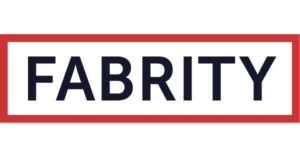New web development frameworks are constantly being released to meet the demands of the ever-evolving web development industry. Blazor is one of the latest web technologies available for use in production systems. Its functionality creates a single framework by unifying frontend and backend application development using C# and .NET.
What is Blazor?
Blazor is a web development tool that is part of Microsoft’s .NET framework. It lets developers build detailed graphical UIs for websites and applications. Offering the ability to work exclusively in a browser, as well as offline functionality, Blazor also streamlines development by combining front and backend operations in one single language. Why should you consider using it, and does it have a future?
Released in 2018, Blazor is part of Microsoft’s .NET platform. Initially released in 2002, .NET was conceived as a developer platform offering tools, programming languages, and varied component libraries to aid in the construction of different types of applications for the web, mobile, and desktop.
The platform also offers its own framework called ASP.NET, which acts as an extension offering features allowing for greater ease in creating web applications. Blazor is a feature of ASP.NET.
.NET programming languages are based on C#, F#, and Visual Basic, and ASP.NET offers several useful features and additions to these. One major feature is syntax that provides easy web-templating, offering the ability to quickly deploy server-based code. This creates web content and functionality in moments, rather than the time commitment of coding from scratch. This page-templating syntax is called Razor.
Blazor, then, is a portmanteau word combining “browser” and “razor,” drawing attention to the fact that Blazor allows developers to use templates and components for UI directly from their browser, all while using the tools available in the .NET ecosystem and so running off that functionality.
It is a framework that allows all coding and functions to be completed using C# and components provided by the .NET platform, rather than JavaScript.
Why this is significant, and what it means for developers and businesses will be the focus of this article.
Is Blazor better than JavaScript?
There are many frontend frameworks available for developers to choose from. Frameworks such as React, Vue, and Angular are the most common. All of these have their differences, advantages, and disadvantages. They also all have one main requirement: that the developer be thoroughly conversant and confident in the use of JavaScript, a language that has become the backbone of web development.
This is because JavaScript allows developers to create varied and sophisticated UIs for both web and mobile that provide excellent user experiences. It has a large ecosystem of libraries and components that can be included in multiple projects without the need for any unwieldy changes or recoding.
Unfortunately, it is far from perfect and has many issues associated with it, as any developer will tell you. The result is a difficult and problematic language that nevertheless forms the basis for most frontend frameworks, with developers then being obliged to learn it.
Blazor is Microsoft’s attempt to break the monopoly and simplify development. A useful and versatile development tool, Blazor completely dispenses with the need to use JavaScript.
Open-source and free to use, Blazor uses C#, HTML, CSS, and Razor templates rather than JavaScript to build pages and applications, making development easier and faster.
Blazor breaks the industry’s reliance on JavaScript for web development. C# is considered an easier language to learn than JavaScript and offers obvious advantages when it comes to speed of creation and development.
However, 98% of websites currently rely on JavaScript as a client-side programming language, with its frameworks being among the most utilized by developers and businesses. Meanwhile, ASP.NET core running on .NET runtime, which can be used as a client-side technology by Blazor developers, is still a highly demanded backend framework for web development.
Likewise, when scaling and transferring projects between frameworks and platforms, it is easier if there is a language in common that most developers are familiar with. There is also an enormous array of ready-to-go components and tools that exist in the JavaScript ecosystem for developers to use.
This might suggest that JavaScript and other frameworks have a better competitive edge over Blazor, despite Blazor’s comparative ease of use, but there are other things to consider. So, is this framework a valuable web development solution that is worth a developer’s time?
Read more on Web development:
Headless CMS vs. traditional CMS—comparison
A web application security checklist for every stage of development
Micro frontends: pros and cons
Fluent UI
Progressive web apps (PWA)—a gentle introduction
React best practices for web development
React vs React native—which one is better for your business
What is the Electron software framework?
Is Blazor worth learning?
Blazor, then, does not seem that useful if its programming language is limited to C#, no matter how comparatively easy that language is to learn, or how disillusioned developers might be becoming with JavaScript.
However, there are further advantages in how Blazor performs that are not limited to ease of use. First, we need to analyze the standard work segmentation of web development.
Web development workload is usually split between frontend and backend programming, also known as “client-side development” and “server-side development.” Frontend development is concerned with creating the graphical user interface (UI) of a website or app, while backend development involves all the aspects that users are not aware of, such as databases, API integration, and server communication.
Each of the two different kinds of development has its own language. Frontend generally employs languages such as JavaScript, HTML, and CSS, which are what allow developers to use frameworks such as React, Vue, and others. Backend development uses different languages, such as Ruby, Python, or PHP.
This division entails the necessity for developers to learn two sets of languages, as well as the mechanics of having their server-side dynamics render and interact with their client-side applications. This is already enough to create a steep learning curve, but the addition of having to learn JavaScript makes the curve all the steeper.
The benefits of Blazor should now be clear. Thanks to this framework, developers can now work on both the client and server-side parts of their apps using only C#, and additionally HTML, CSS, and the Razor templates that form its core. These are all basic features when compared to the complexity of JavaScript.
For developers, this removes the need to learn two sets of languages. For employers, this also removes the need to employ separate frontend and backend developers: Blazor gives all developers full-stack status if they are comfortable using C# and HTML.
The apparent simplicity of this means that many developers are eligible to work on even complicated projects and that employers need not rely on so many contractors.
All of the above means that Blazor is definitely worth considering. Especially when we factor in the ongoing support of Microsoft and the fact it is a feature of the extensive and widely used .NET platform.
How does Blazor work?
Blazor offers:
- a repertoire of web UI components using C#, HTML, CSS, and Razor-based templates
- client and server-side code rendered in C#
- the means for sophisticated and highly interactive UIs to be created for websites and applications without the need for JavaScript.
Its functionality rests on two different hosting models:
- Blazor WebAssembly—this is one of the Blazor components that allows the frontend logic and development to run directly in the browser via C#, HTML, and CSS, instead of on a client server in a backend language, and uses the same security sandbox as some JavaScript frameworks. WebAssembly is based on Open Web Standards, meaning that there is no need to install extra plugins. The .NET runtime functionality is included in the browser, allowing for offline work and direct changes to the UI, all rendered and realized in the browser itself.
- Blazor Server—Blazor establishes a real-time connection with a messaging framework called SignalIR. This allows the app to transmit client-side UI changes to the server, which then notes the ‘diff’ between this and the previous state of the interface. This ‘diff’ constitutes the UI changes that are relayed back and then inserted into the DOM.
Blazor WebAssembly acts as a framework running on .NET logic, which allows for real-time changes to the frontend UI interface without any recourse to any language other than C#, HTML, or CSS. The server model relays all client-side instructions in C# to the server and makes changes accordingly, even if the server is operating on JavaScript, PHP, or another backend language.
It is clear then how both of these models allow Blazor to circumvent the need for both JavaScript programming and the traditional segmentation between client and server-side programming. This might suggest one disadvantage: if coding and components are completed and rendered in C# or with Razor templates, does Blazor not then lose access to the entire ecosystem of tools and components found in JavaScript frameworks such as React and Vue?
Fortunately, Blazor has a full JavaScript interop, meaning that JavaScript APIs and libraries for frontend development can still be used, as Blazor can take over and execute the JavaScript functions without the need for further input from the developer. Similarly, WebAssembly allows for JavaScript or other backend languages to be used, if need be, as .NET does not need to be installed on the server. As everything runs on the browser, Blazor can easily act as the frontend framework.
Advantages of Blazor: Is it the future of web app development?
Since its release in 2018, Blazor has grown to be a mature framework that is currently being used by several companies, including Microsoft’s documentation site. With close to five years in existence, a faster learning curve, and optimized web application development speed, companies are steadily adopting it. It works similarly to React, a JavaScript-based library for building interfaces. However, Blazor’s ability to allow developers to build both the frontend and backend with one stack has made it more attractive.
It is easy to see how Blazor could be a strong rival among other frameworks such as React and Vue, especially as the functionality of the latter still requires server-side maintenance. In terms of the elimination of a steep learning curve and its deployment speed, Blazor is a clear success. So, does this mean it is certain to become the future of web development? Let us consider the advantages of Blazor:
- Provides the means to a create sophisticated graphical UI without JavaScript and using simpler languages like HTML, C#, and CSS.
- The above, combined with the ability to eliminate the traditional division between frontend and backend work, allows for faster development.
- Server and client-side code sharing: Blazor uses the same validation code on both the client side and server side. It is possible, for instance, to tell if a client-side user has entered a non-existent username in real-time. This helps to minimize the round trip to the server side. That is because the same validation code can be implemented on the server side to simply verify the user input.
- Blazor WebAssembly allows for offline work and support. By enabling service workers, it is possible to configure Blazor WebAssembly applications to work offline.
- Runs on the .NET ecosystem and framework. It supports server-side rendering; i.e., the initial Blazor application rendering is done on the Blazor server before being sent to the client side as HTML, improving the accessibility and performance of web apps.
- Easier to give tasks to less experienced and novice developers who are only comfortable with the basics.
- The JavaScript interop allows developers to use all JavaScript-based tools, despite Blazor dispensing with JavaScript as a language.
On the positive side, this framework offers enhanced ease of use for both server-side and client-side development. It is versatile and, in the long run, it might be the go-to tool for web developers who want to quickly create reliable applications. Consider also that Blazor is a Microsoft .NET tool and as such has the full support of this industry leader. This virtually guarantees it a very comfortable future in the market.
Its simplicity allows for a greater scope of utilization, as businesses can use it with less experienced developers, leading to lower operational costs. This also makes it possible to increase the existing workforce and increase task delegation on different projects. So, developers looking to enhance their employability prospects and companies looking to economize on their spending can both gain from Blazor.
However, the web application market is diverse and rapidly evolving. Even though it supports two hosting models with unique use cases and advantages and runs efficiently on modern browsers, the need for an extensive library and established community support means that to achieve full adoption, this framework faces stiff competition. As a result, it may be too soon to claim Blazor to be the future of web applications, even though it is evident that it is here to stay.
When to use Blazor
Instances where Blazor is applicable for use include:
#1 The project requires a fast turnaround time
Server-side Blazor WebAssembly applications are built using C Code. This often helps to reduce the application development time and allows developers to pay attention to more important processes.
#2 You need to create an SPA or MVC-type app with a strong UI component
Blazor is suitable for building Single Page Applications (SPAs) and MVC-type apps that need stronger UI components. This is because Blazor facilitates the development of interactive UI components that can be seamlessly integrated with other application components.
#3 To create a public or client-facing CRM system
The client side of this web framework relies on a web assembly server hosting model—ideal for improved web app performance and providing a more responsive UI experience by minimizing the need for server-side roundtrips, leading to better CRM performance. This is unlike Angular’s server performance, which is more demanding and requires more server-side resources.
#4 You are developing a mobile app
Blazor has a versatile UI rendering division that changes to accommodate both mobile and web app interfaces.
#5 Your project is in-house and will involve a team
Regardless of the level of experience, Blazor development offers simplicity, making it ideal for use by teams with a reduced likelihood of errors and enhanced ease of use.
Why is Blazor here to stay?
Microsoft has invested in Blazor’s future and the impressive framework is here to stay. Unlike its major competitors, Blazor has been rapidly adopted in the web framework community as more ASP.NET core developers continue to use it. Its ease of use, shallower learning curve, and ability to build dynamic, interactive web UIs without learning new JavaScript frameworks have captured the attention of increasing numbers of developers.
At the moment, Stack Overflow experts and Microsoft, in addition to low-cost contractors, have created a thriving ecosystem that supports the adoption of the framework. It is estimated that there are 4135 live websites using Blazor with 777 websites that added Blazor recently. According to Visual Studio Magazine, the usage and desirability of this framework climbed from 6th to 4th position in 2021.
For developers, this only means that Blazor is definitely worth learning in 2023. It is attractive for building modern-day applications, and with an increasing number of companies adopting Blazor for numerous projects, it only means that there will be a growing Blazor developer demand in the future.
Even though Blazor’s ecosystem has been in use for a few years, its desirability and application in the industry are poised to steadily grow into the future. The well-polished features including free component libraries that suit not only developers but also businesses. This includes Blazored, MatBlazor, and MudBlazor.
In addition, its offerings such as dynamic UI, data grids, and attractively styled charts are the best-selling points for its current and future utilization. Reports indicate that close to 25 companies have used this framework in their technology stacks, including GE Aviation and the Postage startup. Besides that, multiple software development houses use it and as a result, it is already applied in production.
Blazor use cases
The Blazor framework can reduce development costs and time. It can also enhance the productivity of C# and .NET developers writing web applications by reducing workload. Examples of projects done using Blazor server include:
#1 The Postage startup’s choice to use Blazor framework has turned out to be an efficient and cost-effective approach. Designed for use with ASP.NET core, this web framework allowed the team to use C# for full-stack development to deliver interactive web UI, eliminating the need for JavaScript frameworks, which are ideal for use with a sophisticated framework such as React.
#2 GE Aviation used ASP.NET core to build the backend of its FlightPulse App and a Blazor framework to build the Config Console App. By doing so, the company has enhanced its application’s efficiency and flight safety, as Blazor allows GE to seamlessly share code between the frontend and backend.
#3 South African fintech Allegiance Consulting used a Blazor framework to develop an interactive application for one of its clients.
#4 Zero Friction, which specializes in metering and billing in the energy sector, built its Blazor framework to create its customer-facing portal. The serverless app has allowed this business ease of scalability and can efficiently accommodate major traffic spikes.
#5 ShoWorks Exhibitor used Blazor to host its live auctions. Even though the company had considered several web application technologies, a Blazor web framework proved offer the most effective time-to-market during auctions, especially in a tight market environment created by the COVID-19 pandemic.
Conclusion
Blazor is a modern web technology that has been around for a few years with steadily growing popularity among developers due to its ability to support both server-side and client-side rendering. Its desirability has increased over the years with multiple companies in different industries using it to implement various projects. While it is steadily maturing, it is clear the impressive framework is here to stay. It is a strong competitor with an easier learning curve and acts as a productive programming model.
Furthermore, Blazor applications are known for their higher performance efficiency. Blazor is constantly evolving and continues to provide developers with new improvements and features. Even though it has built traction in the web industry, this framework is still considered to be relatively new, hence it is too early to state whether it will be the future for web development.
You may also be interested in reading our other blog posts, Blazor vs. React—key differences, pros and cons, and use cases, and Blazor vs. Angular: which is better for web development in 2023, to see how Blazor compares to these popular web development frameworks.
This article was originally published October 26, 2021, and updated May 15, 2023.











